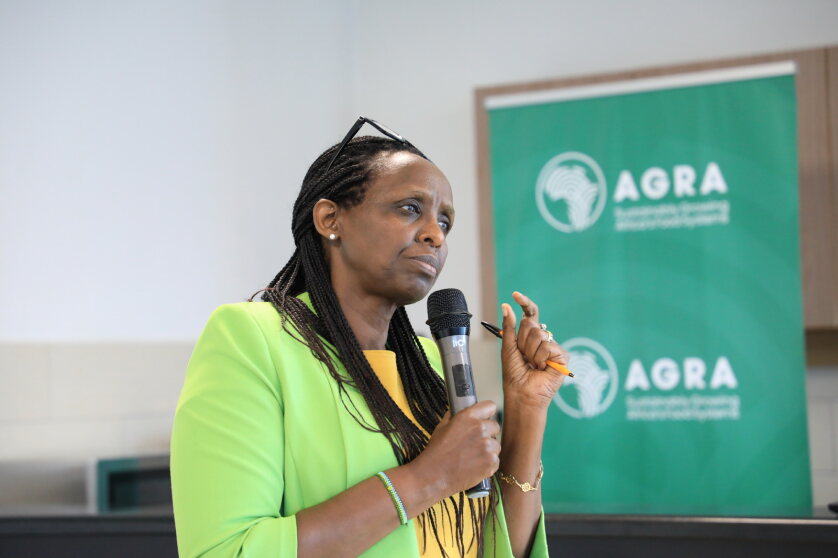The gains and misses in consolidating EAC bloc’s maize granary
*Tanzania set to become no 1 producer in Africa
* East Africa’s most political crop
By Anthony Muchoki
East African Community (EAC) maize powerhouse, Tanzania has managed to create the right conditions to leapfrog way up as Africa’s topmost corn producer, save for abrupt policy shifts, that stands on the pathway.
“Fermenting proper business environment for maize trade could easily propel Tanzania to become the number one producer of the crop in Africa, following great scientific strides in maize breeding and other multi pronged improvements along the value chain,” notes Dr Arnold Mushongi, National Maize Breeder, at the Department of Research Ministry of Agriculture, Food Security and Cooperatives.
The maize scientist, PhD study was paid for by the Alliance for a Green Revolution in Africa (AGRA) years ago, and the field work involved breeding maize at the Agricultural Research Institute Uyole (ARI-UYOLE), Mbeya, and helping farmers to establish demo farms for breeder seeds.
Transformation, better life for farmers
Such actions among others including AGRA’s support to 37 seed companies that get breeder (pre-basic) seeds multiplied at government owned agricultural research stations such as ARI-Uyole, has greatly contributed to the transformation.
Southern Highlands Zonal Director of Research and Development, Southern Highlands Zone at ARI -Uyole, Dr Tulole Lugendo Bucheyeki as well as Southern Agricultural Corridor of Tanzania (SAGCOT) Chief Executive Officer Mr. Geoffrey Israel Kirenga, also are of the view that the current high productivity if maintained will eventually make Tanzania the top producer of maize in Africa.
“The collaboration and partnership with AGRA in crop improvement and soil health programme has made great gains— crop varieties that we came out with are being bought by seed companies,” notes Dr Bucheyeki, also a beneficiary of AGRA scholarship for agronomists for his PhD study.
Thanks to farmers adopting improved maize varieties , he adds in Southern Highlands Zone there is no acute state of poverty, with most residents living in permanent houses.
Popular maize hybrids released by the Maize Improvement Programme at ARI-Uyole, with support of AGRA and some other development partners include: UH615, UH6303, UHS5210, and UHS5350.
“We want more farmers to adopt modern maize varieties with high production potential and not susceptible to diseases like maize streak virus, grey leaf spot and other maladies,” he notes with a disarming smile.
At the moment (2016/7), Tanzania is the number 4 biggest producer of the crop in the continent and number 20 in the world.
The journey to attain higher production and in essence assurance of food security for the nation was not a bed of roses.
For example, in 1998/99 the government declared a nationwide food shortage due to poor vuli season, and it was maize imports that saved the day.
For years, until, 2010, the trend would be the same, in case of poor rainfall, maize imports would be needed.
The then president Jakaya Kikwete was determined to end the vicious cycle once and for all. His modus operandi mainly was based on public private partnership for agro-projects. At the same time, he embraced development partners to finance some initiatives, as much as he pursued homegrown solutions.
AGRA in the drive to ignite a green revolution in Africa, worked with the government of Tanzania, to solve the perennial maize woes. Over ten years down the line, a number of interviewed stakeholders see the AGRA led initiatives as having been pivotal in the maize boom being enjoyed today.
One of the biggest weakness in maize farming was lack of highly adaptable maize to ensure high yields, which has been tackled almost fully. The other weakness was post harvest losses, and AGRA introduced new technologies to contain the problem.
“Maize breeding is transforming our agrarian sector. The seeds we have developed over the year have become a game changer in maize production. AGRA has played a key role in enabling myself while at Agricultural Research Institute Uyole (ARI-UYOLE) to work on improved varieties which have become very successful, ” asserts Dr Arnold Mushongi, now the director of the Ministry of Agriculture Training Institute ILONGA – KILOSA, Morogoro but still leading maize breeding activities in Southern Highlands.
“We have reached a tipping point, where maize farming need to be taken to the next level- if the right business environment for farmers is put in place we will leapfrog to number one producer of maize in Africa within a short time. Breeder seeds from our institutions are now plenty, seed companies are taking them up. Many farmers that I interact with are excited to produce more” he notes.
Maize is Tanzania’s most important cereal crop. The production in 2013/4 was 6m tonnes and in 2014/5 rose to 6.4m tonnes and surpassed the domestic demand threshold of 5.2m tonnes, according to data from the Ministry of Agriculture.
Export ban…farmers and traders left in deep sea of losses
To keep on increasing the threshold every year, what is needed is expansion of maize exports market. Before the maize export ban of 2017, between 2013 and 2016 the annual maize exports had risen to over 400,000 tonnes.
The biggest hindrance to greater development of maize trade is politicisation of the maize, noted a top gran business man based in Mbeya. He did not want his name revealed. Politics of maize are not only only in Tanzania, but in East Africa in general.
Many times abrupt abrupt policy changes including price fixing by the government leaves farmers and traders alike grinding teeth in the deep sea of losses, he noted.
From early 2017 the newest maize policy for Tanzania was that traders should export maize flour and other products and not raw maize crop.
According to the Minister for Agriculture Dr Charles Tizeba, the main focus at the moment on maize is to improve linkages between maize producers and processors.
In the current direction taken,the business success of small, medium or large scale millers in the near future will determine the future of the all important subsector.
Mr Salum Sumri, is a large scale farmer in Nkazi, Rukwa Region (over 2000 acres, with target for 5000), who depends of maize breeds brewed at Ari-Uyole. At the moment he has a stock of about 50,000 sack of maize(each 90kg), which he is not able to sell locally or export. Small scale farmers in bread basket regions are also hoping for better prices as they are stuck with the maize in their stores.
“Our only consolation is that we are using PIC bags introduced by AGRA to store our maize… we don’t know the when the price will increase but selling at Tsh 20,000 per bag is a loss!” noted a small farmer in Njombe, Mr Joseph Saugu.
Before this story, was submitted the government again on 13th November at the Parliament, announced the lift of the ban on maize exports to East African Community (EAC) member states and other African countries.
Grant
2011: USD 185,000
Division of Research and Training, Ministry of Agriculture, Food Security and Cooperatives
Towards Improvement and Adoption of African Crops: Development, Production, Testing, Distribution and Promotion of Tanzanian Experimental Hybrid Maize Cultivars


